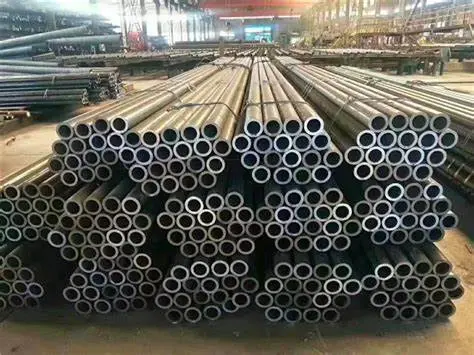A comprehensive guide to the use of high-end seamless pipes
Seamless steel pipeis made of perforated whole round steel, and there is no weld on the surface, which is called seamleSs Steel pipe. According to the production method,seamless steel pipes can be divided into hot-rolled seamless steel pipes, cold-rolled seamless steel pipes, cold-drawn seamless steel pipes, extruded seamless steel pipes, pipe jacking, etc. According to the cross-sectional shape, seamless steel pipes are divided into two types: round and special-shaped, and special-shaped pipes have a variety of complex shapes such as square, oval, triangular, hexagonal, melon-seed-shaped, star-shaped, and finned tubes. The maximum diameter is 900 mm, and the minimum diameter is 4 mm. Depending on the application, there are thick-walled seamless steel pipes and thin-walled seamless steel pipes. Seamless steel pipes are mainly used as petroleum geological drilling pipes, cracking pipes, boiler pipes, bearing pipes for petrochemical industry, and high-precision structural steel pipes for automobiles, tractors and aviation.

A steel pipe without joints along the perimeter of its cross-section. According to different production methods, it is divided into hot-rolled pipes, cold-rolled pipes, cold-drawn pipes, extruded pipes, pipe jacking, etc., all of which have their own process regulations.
The materials include ordinary and high-quality carbon structural steel (Q215-A~Q275-A and No. 10~50 steel), low-Alloy Steel (09MnV, 16Mn, etc.), alloy steel, stainless acid-resistant steel, etc.
According to the use, it is divided into two categories: general purpose (for water transportation, gas pipelines and structural parts, mechanical parts) and special (for boilers, geological exploration, bearings, acid resistance, etc.).
Seamless steel pipes are very versatile.
1. The seamless steel pipe for general purpose is rolled by ordinary carbon structural steel, low-alloy structural steel or alloy structural steel, with the largest output, and is mainly used as a pipeline or structural part for transporting fluids.
2. According to different uses, it is divided into three types of supply:
a. Supply according to chemical composition and mechanical properties;
b. Supply according to mechanical properties;
c. Supply according to hydrostatic test. Steel pipes supplied according to class A and B, if they are used to withstand liquid pressure, should also be subjected to hydrostatic tests.
3. Seamless pipes for special purposes include seamless pipes for boilers, seamless pipes for chemical power, seamless steel pipes for geology and seamless pipes for petroleum.
Seamless steel pipes have a hollow cross-section, and are widely used as pipelines for transporting fluids, such as pipelines for transporting oil, natural gas, gas, water and some solid materials. Compared with solid steel such as round bar, steel pipe is lighter in weight when the bending and torsional strength is the same, and it is an economical cross-section steel.
It is widely used in the manufacture of structural parts and mechanical parts, such as oil drill pipes, automobile drive shafts, bicycle racks and steel scaffolding used in building construction, etc., which can improve the utilization rate of materials, simplify the manufacturing process, save materials and processing man-hours, and have been widely used in steel pipe manufacturing.















